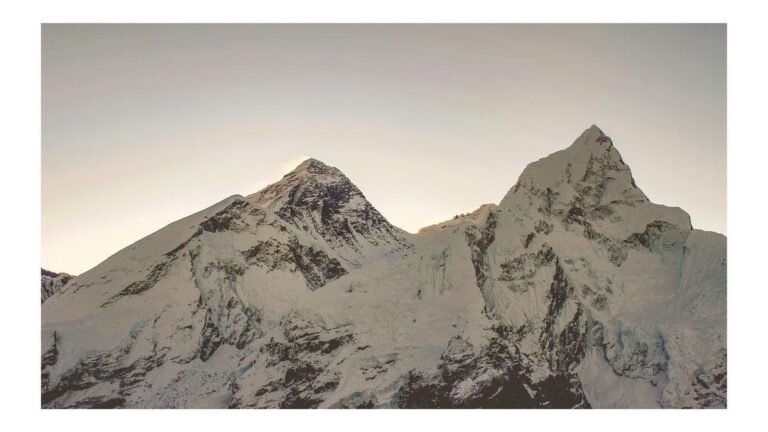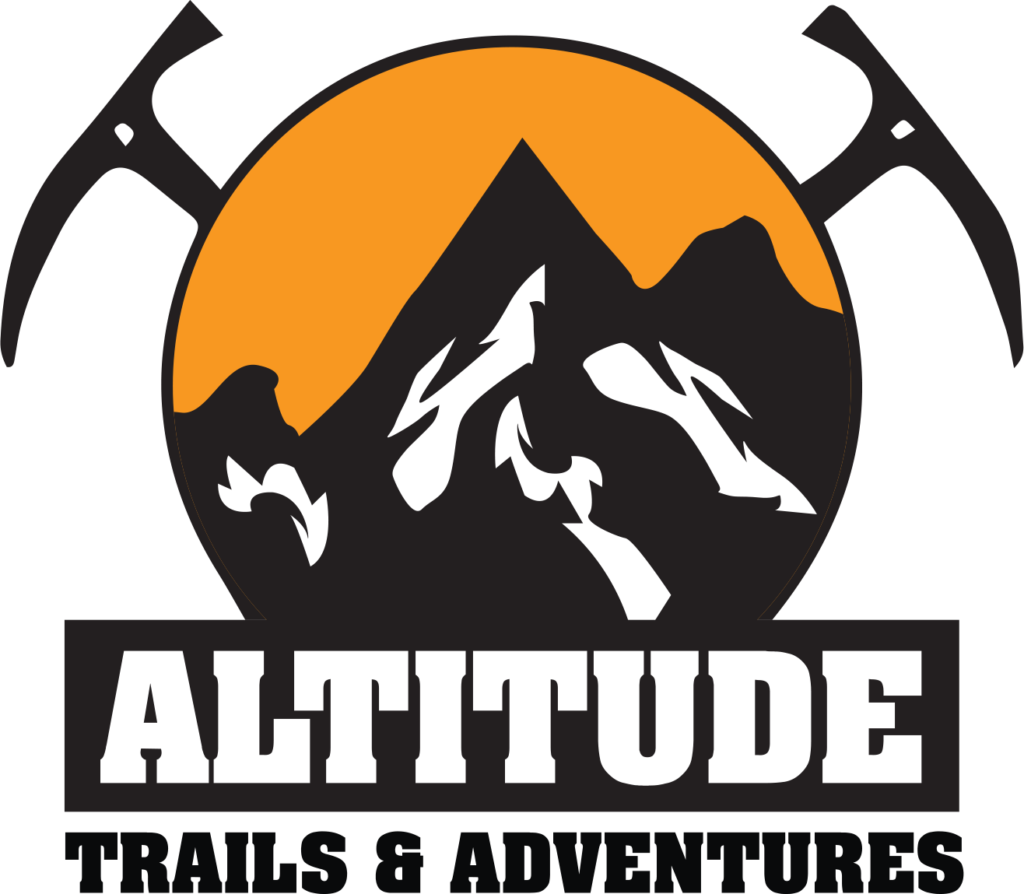What to pack for Everest Base Camp
- Blog
- 27 November 2023
- Altitude Trails

Embarking on the Everest Base Camp trek is no ordinary adventure; it’s like going on a big journey that needs careful planning and smart packing. Picture this: the huge mountains of the Himalayas calling you to explore. Having the right stuff with you can mean the difference between having a tough but exciting trip or struggling against the tough weather. Let’s dive into the ultimate packing list, covering everything from clothes and shoes to important gear, staying healthy, and those little extras that can make your experience even better.
Everest Base Camp, often called EBC, is a famous trekking spot in Nepal, up in the Khumbu region. It’s about 5,364 meters (that’s 17,598 feet!) above sea level. This place is where climbers start their journey to conquer Mount Everest. But even if you’re not climbing the big peak, the trek to Everest Base Camp itself is an amazing adventure that takes about 12 to 14 days, depending on how you plan your trip and how well you get used to the high altitude. As you walk along the trail, you’ll go through charming Sherpa villages, colorful rhododendron forests, and tough mountain scenes. And of course, you’ll get jaw-dropping views of snowy peaks like Everest, Lhotse, Nuptse, and Ama Dablam. It’s a bit like stepping into a magical world!
Clothing
When you’re trekking to Everest Base Camp, the weather changes a lot. It starts off not too hot and not too cold, then gets really cold as you go higher up. So, what you wear is super important to make sure you stay comfy and safe on the journey.
Insulation Layer: Start by wearing layers that keep you warm. Wear a special kind of clothes called thermal base layers—they help take away sweat and keep you toasty. Add a fleece jacket for extra warmth, and when you go even higher where it gets really chilly, wear a down jacket. It’s like having a cozy blanket to stay warm as you climb up the mountains.
Outer Layer: Your outer clothes need to be warm, waterproof and windproof, they should keep you dry when it’s rainy and protected from the strong wind. So, wear a good jacket and pants made for this job. They’ll be like a shield, keeping you safe from rain, snow, and the cold wind. Don’t forget to wear special gloves too, ones that keep your hands warm and dry, like little cozy houses for your fingers.
Hat: Wearing a hat is really important. A warm hat keeps your head cozy when it’s cold, and a sun hat with a wide brim protects you from the strong mountain sun. Don’t forget sunglasses. They’re like super shields for your eyes, keeping them safe from the bright sun. Also, wear a buff or a scarf around your neck and face, especially when it’s windy or dusty. It’s like a friendly shield, making sure you stay comfortable during the trek, especially in the open areas.
Footwear:
Choosing the right shoes is really, really important. Your feet are like the heroes that take you to Base Camp and back, so you need super comfy trekking boots. No one wants painful feet or blisters, so it’s a good idea to spend a bit more money on good boots and socks.
Hiking Boots: Buy comfortable shoes that fit well and support your ankles for walking on different types of land. Make sure the shoes can keep your feet dry, this helps a lot. It’s important for a nice and safe trek. This way, you avoid feeling uncomfortable or having problems because your feet got wet.
Hiking Socks: Pick special hiking socks for your trek. They’re made just for walking a lot and will make your feet feel good during the hike. Find socks that pull away sweat to keep your feet dry and stop blisters from happening. Also, check that they fit nicely with your hiking boots to have the most enjoyable time on the trail.
Gear and Equipment:
Bag and Backpacks: Select a backpack with a capacity of 50-65 liters, considering the length of your back for comfort during the entire trek. Ensure it is sturdy enough for the journey. Confirm it comes with a rain cover to safeguard your belongings in case of unexpected rain. This precaution ensures your items stay dry and secure inside the backpack, allowing you to carry everything you need without concerns about them getting wet.
Get a sleeping bag that’s good for cold nights up in the high places. Use a special sack that squeezes it small, so it doesn’t take much space in your backpack. Walking sticks (trekking poles) are helpful for staying steady on rough ground. They make it easier on your knees and help you keep your balance, which is super important when you’re going down. Also, bring a strong flashlight with extra batteries since there might not be much electricity on the trek.
Health and Hygiene
Taking care of your health is super important when you’re on a high-altitude trek like Everest Base Camp. Bring a complete first aid kit with medicine for altitude sickness, pain relief, and any prescriptions you need. It’s vital to be ready for regular sickness or injuries that might happen on the trail.
To make sure your drinking water is safe, use water purification tablets or a special filter. Also, keep good hygiene by bringing small toiletries like shampoo, soap, toothpaste, and a quick-drying towel. This helps you stay clean and healthy during your journey.
Snacks and Nutrition
When you’re trekking up in the high mountains, you need a lot of energy. Bring snacks that give you a big burst of energy, like energy bars and nuts. These will help you stay strong during the whole trek. Also, use a special bottle to keep your water from freezing in the cold mountains. This way, you can always have a drink and stay hydrated while you’re up high.
Water bottle/ Hydration Bladder
Many people choose to bring a strong water bottle. Make sure it keeps your water from turning into ice in the cold weather, so you can drink whenever you want on your trek. You can easily fill it up at different stops along the trail. Some people like using a hydration bladder instead. It’s like a water pouch you put in your backpack, connected to a hose with a sipping part. This lets you drink without stopping, great when you’re walking. But it might be a bit harder to see how much water you’ve had. Just remember, no matter what you pick, drink enough water in the high altitude to prevent dehydration and altitude sickness.
Technology and Extras
Even though it’s important to take a break from technology and enjoy the nature around you, having a few gadgets can make your experience even better.
Camera: A lightweight camera is a must for capturing the beauty of the majestic and breathtaking views. Cameras like GoPro or Insta360 can make your videos awesome.
Portable Charger: A portable charger, like a power bank, is a crucial gadget for trekking. At high altitudes, your mobile and camera batteries can drain quickly, so you can use this portable charger to charge your mobile phone. Additionally, in some teahouses, you might have to pay to charge your mobile. Therefore, a portable charger is essential.
As you get ready for the Everest Base Camp trek, think of this packing list as your helpful guide. Make it fit what you like and need. It’s important to find a balance between carrying light and being ready for the challenges. When you have the right stuff and an adventurous attitude, you’re all set for an amazing journey in some of the world’s most beautiful places. For the best package with highly experienced guides and more recommendations of packing list you can visit us.

